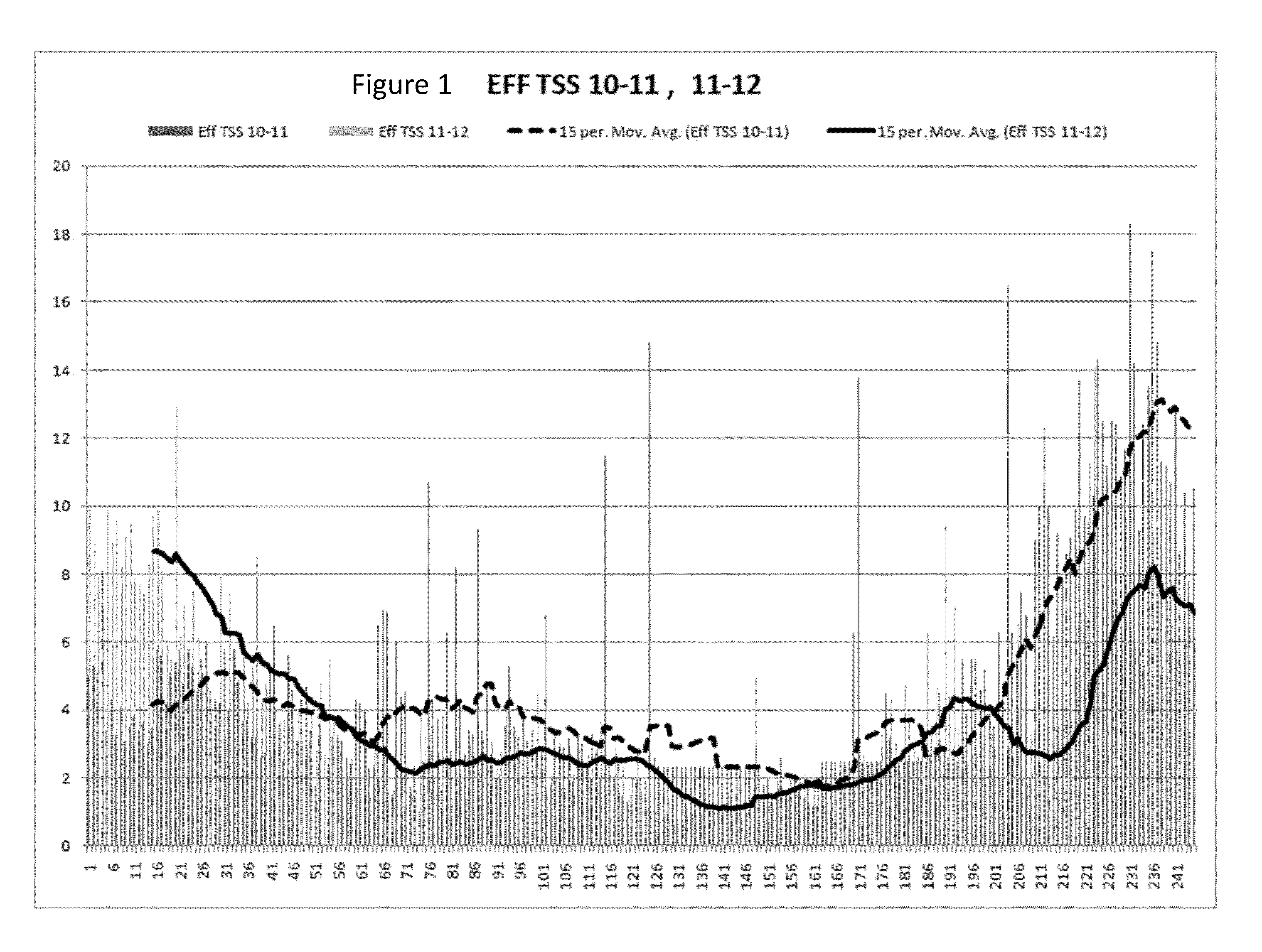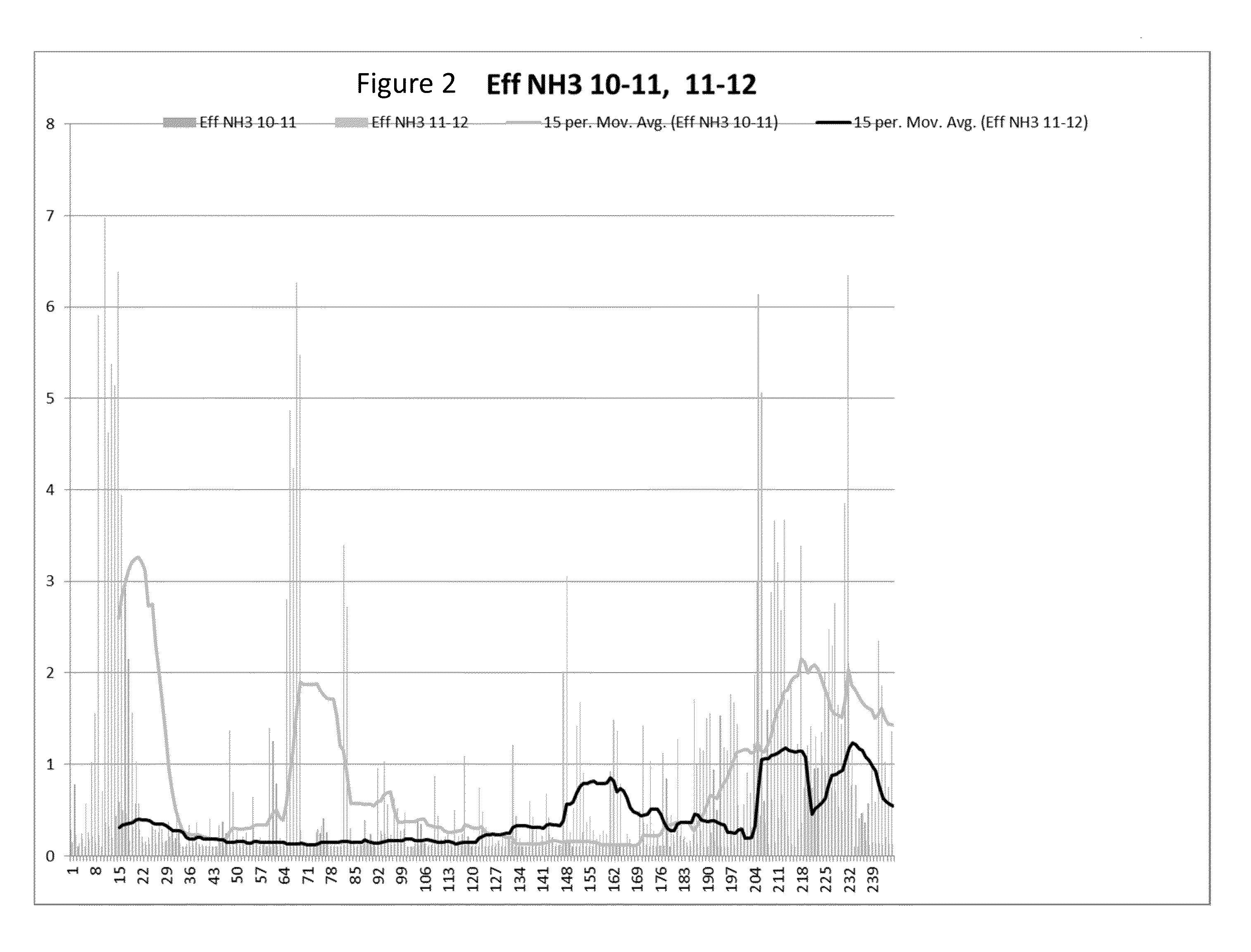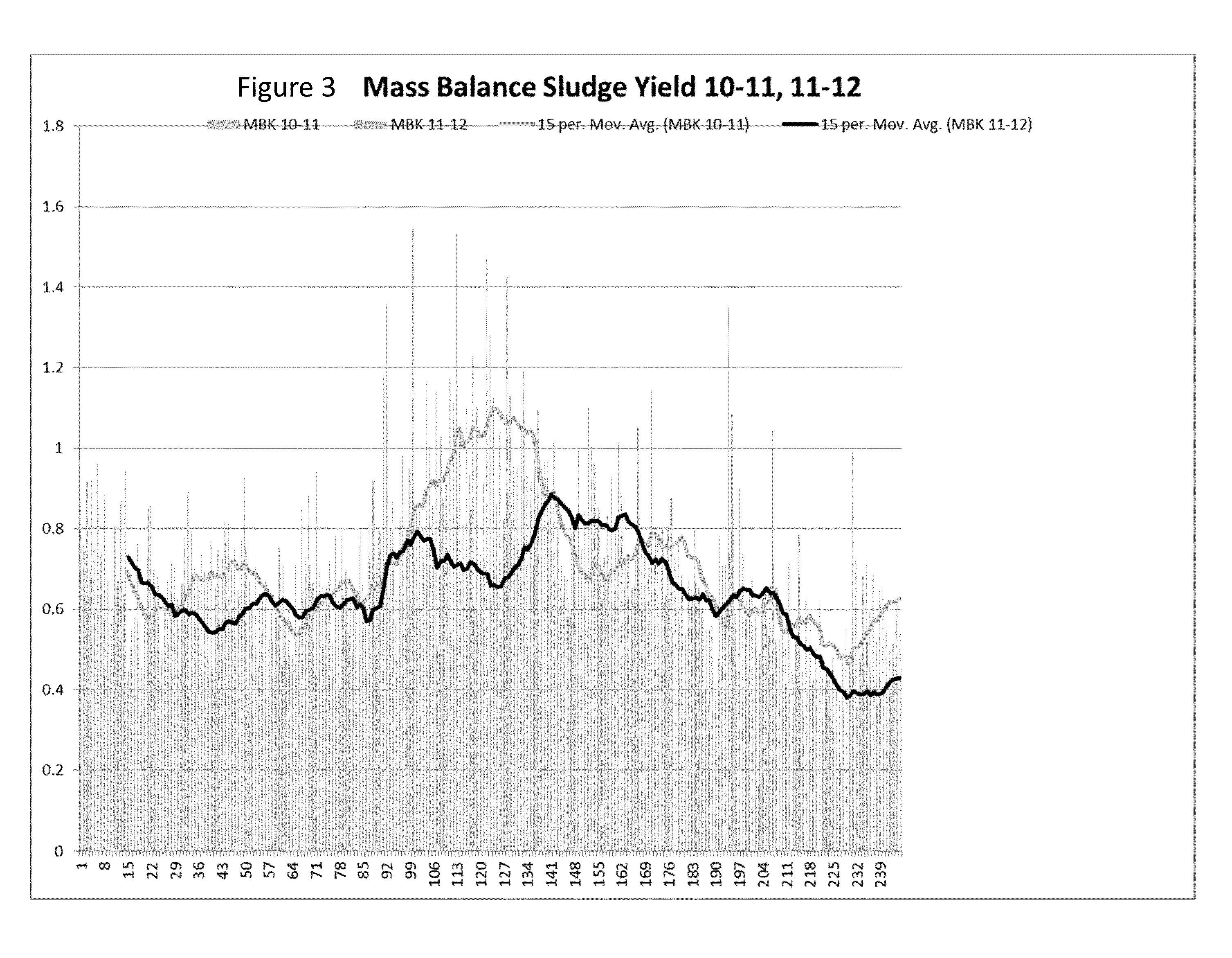Method for treating wastewater with lignocelluosic particulate
a technology of lignocelluosic particulate and wastewater treatment, which is applied in the direction of water/sludge/sewage treatment, water treatment parameter control, chemical instruments and processes, etc. it can solve the problems of large bod.sub.5 contaminants present in industrial wastewater, slow application of this process to the treatment of industrial and cafo wastewater, and inability to meet the requirements of a large-scale industrial wastewater treatment process, etc., to achieve enhanced microbial circumstance, enhanced flo
- Summary
- Abstract
- Description
- Claims
- Application Information
AI Technical Summary
Benefits of technology
Problems solved by technology
Method used
Image
Examples
example 1
Mebane N.C.
[0092]“Fines” (small, fine particles in MLSS) that were not able to be settled in Mebane's clarifiers and was ending up in their Sand Filters, clogging them up.
[0093]Primary Goal: Improving Settling in Clarifiers so the sand filters would not clog up.
[0094]Current Goals: Consistent denitrification; consistent phosphorous removal; eliminate need for settling polymers.
[0095]Dosage: Original based on settling and Total Suspended Solids Goals. % of Mixed Liquor.
[0096]Current Dosing: since Fall of 2011 based on biofilm modeling taking into consideration, solids retention time, influent ammonia, influent COD and flux rate per m2 of media of 0.1125. Using 7.4 M2 / gram kenaf powder.
[0097]FISH: Fluorescent in situ hybridization samples were taken March, June, December 2011 and February 2012 for probes: Ammonia Oxidizing Bacteria (AOBs); Nitrite Oxidizing Bacteria (NOBs); and Annamox bacteria.
[0098]Results: Better settling in clarifiers as measured by less effluent TSS (FIG. 1) and ...
example 2
Lenoir N.C.
[0100]A 2.5 mgd wastewater treatment plant.
[0101]Primary Goal: Sludge Reduction via K value. Measured by Mass Balance.
[0102]Dosage: Based on settling and total suspended solids goals. % of mixed liquor.
[0103]FISH: Fluorescent In situ Hybridization samples were taken for probes: Ammonia Oxidizing Bacteria (AOBs) Nitrite Oxidizing Bacteria (NOBs) and Annamox Bacteria.
[0104]Results: We were not able to perform Sludge Yield Mass balance mathematical analysis due to poor influent COD / BOD record keeping numbers. Better settling in clarifiers measured by less effluent TSS and less usage of polymers for coagulation.
[0105]FISH Results: More Annamox, more AOBs more NOBs (FIG. 10). VIA FISH saw significant changes in microbial population especially the growth of Annamox. We were able to track the presence of Annamox prior to media usage, we watched NOBs populations increase then saw Annamox populations increase while competing NOB populations decreased.
example 3
Roanoke Va.
[0106]Train A, an 8 mgd of a 32 mgd wastewater treatment plant.
[0107]Primary Goal: wet weather settling. Sludge reduction.
[0108]Dosage: Based on settling and total suspended solids goals. 8% of mixed liquor overlapped with ammonia biofilm modeling and SRT.
[0109]FISH: Fluorescent In situ Hybridization samples were taken and probed for Ammonia Oxidizing Bacteria (AOBs) Nitrite Oxidizing Bacteria (NOBs) and Annamox Bacteria
[0110]Results: Wet weather settling—Hurricane Irene washed out Train C, our comparison train, Train A held solids. Measured by reported MLSS in the trains (FIG. 11). Train C had to be rebuilt.
[0111]Settling. 8 mgd Train A ran on 10 Clarifiers, with the media and established growth train was able to be settled in 6 clarifiers.
[0112]Compared to the control Train C, Train A had lower effluent Phosphorous.
[0113]Compared to the control Train C, Train A had lower sludge yields based on Mass Balance analysis.
[0114]When the lignocellulosic media was started Train ...
PUM
| Property | Measurement | Unit |
|---|---|---|
| surface area | aaaaa | aaaaa |
| surface area | aaaaa | aaaaa |
| hydraulic residence time | aaaaa | aaaaa |
Abstract
Description
Claims
Application Information
 Login to View More
Login to View More - R&D
- Intellectual Property
- Life Sciences
- Materials
- Tech Scout
- Unparalleled Data Quality
- Higher Quality Content
- 60% Fewer Hallucinations
Browse by: Latest US Patents, China's latest patents, Technical Efficacy Thesaurus, Application Domain, Technology Topic, Popular Technical Reports.
© 2025 PatSnap. All rights reserved.Legal|Privacy policy|Modern Slavery Act Transparency Statement|Sitemap|About US| Contact US: help@patsnap.com



